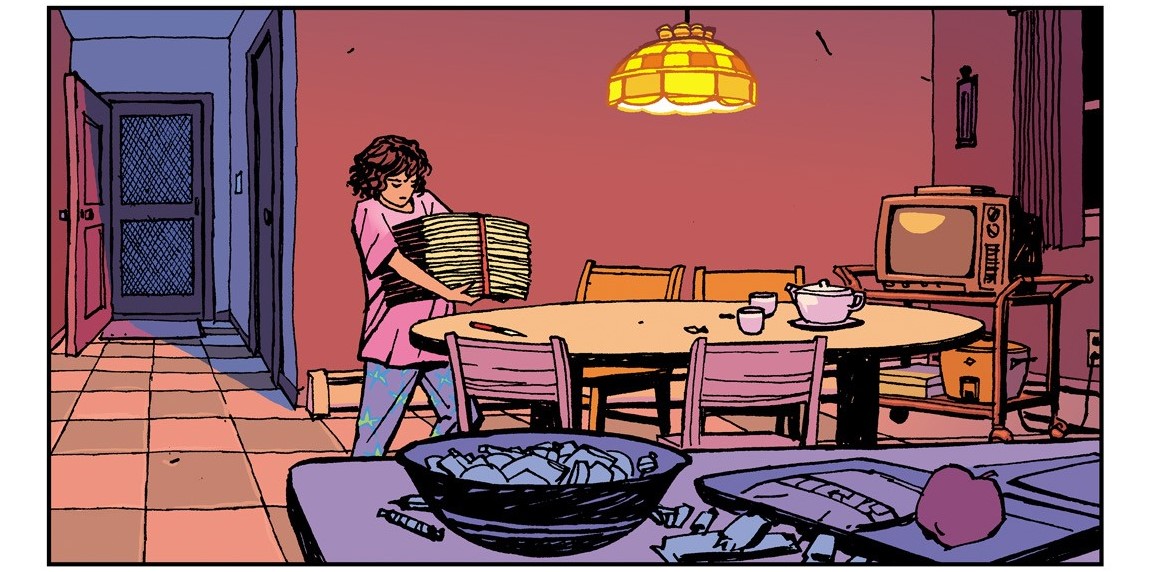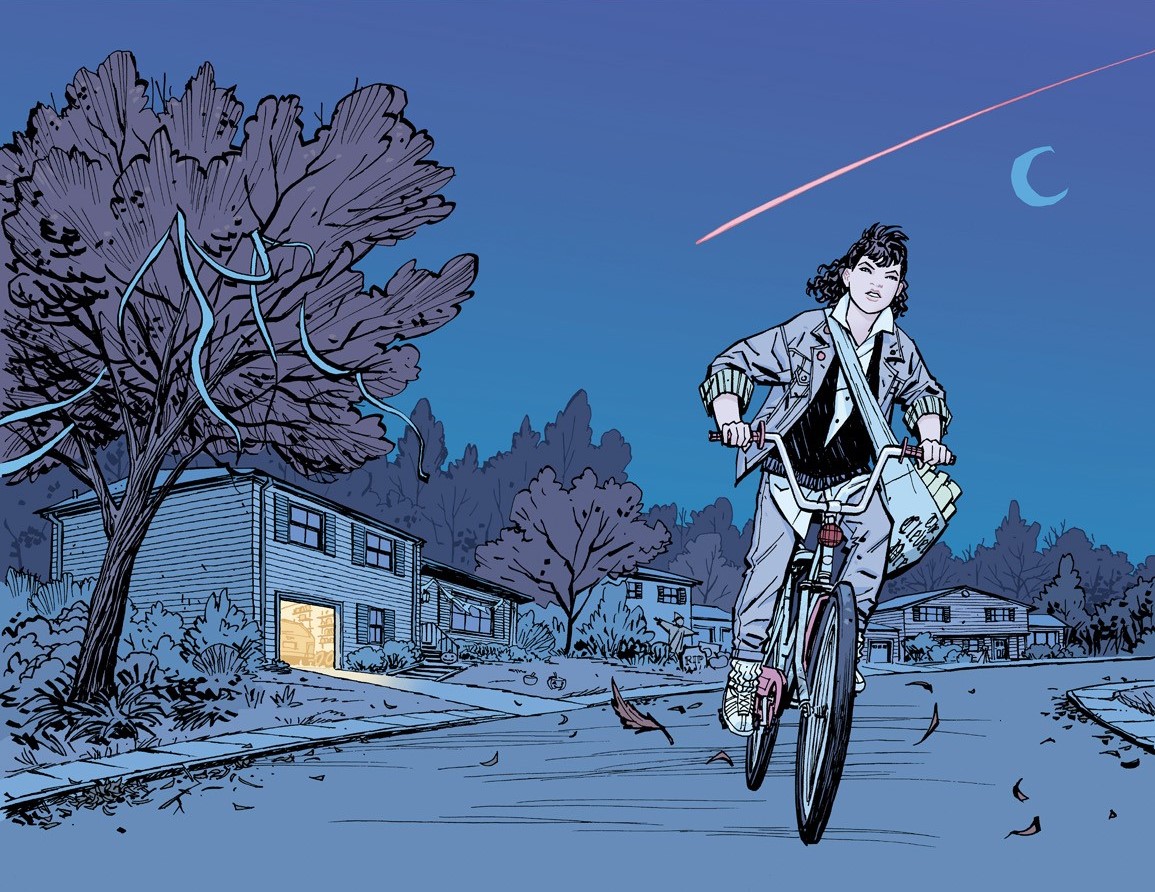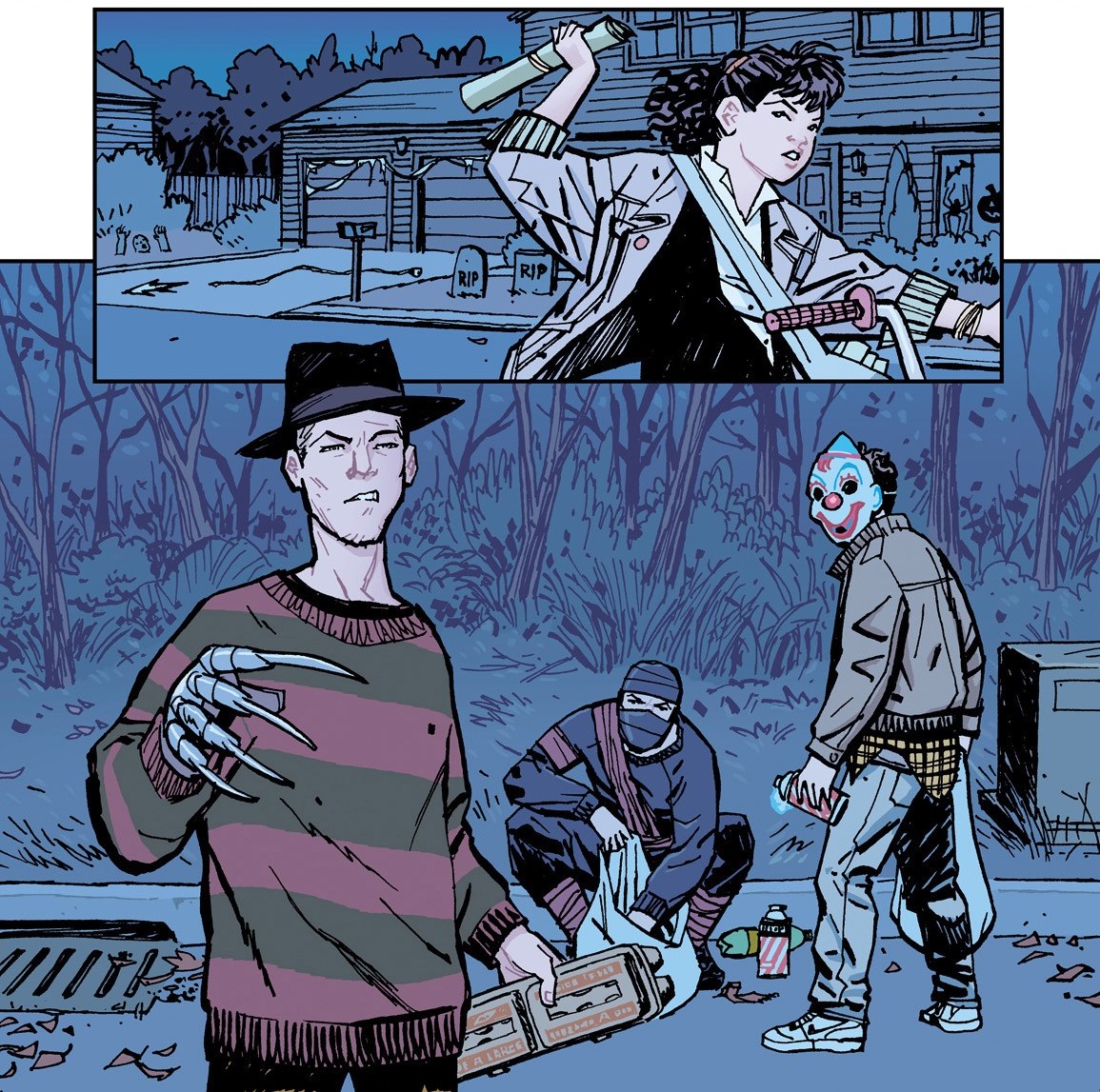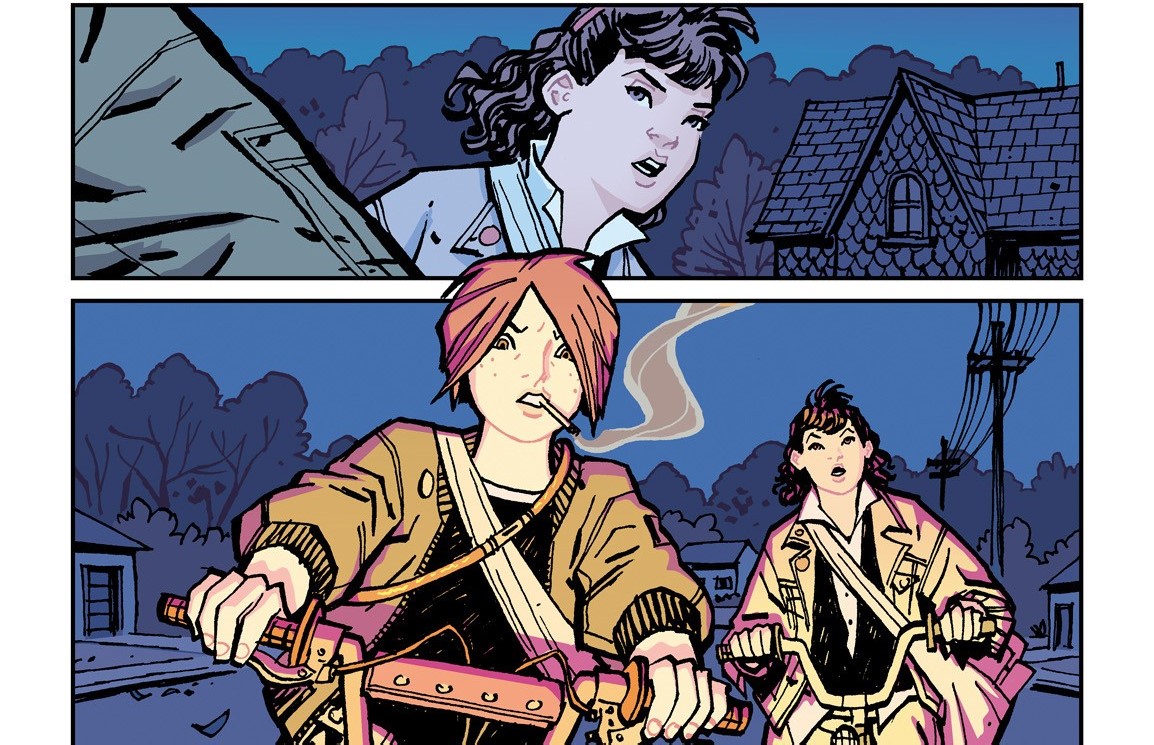PAPER GIRLS, VOL. 1 TP
Story: Brian K. Vaughan
Pencils: Cliff Chiang
Colors: Matt Wilson
Nostalgia is a powerful motivator. It’s easy to tie emotion into the tangible things that were once so important to us. There was never a decade which put more importance on “things” than did the 80’s. There is a trend in pop culture right now to hook audiences with the personal nostalgia we associate with that decade so obsessed with stuff: “The Goldbergs,” “Comic Book Men,” the whole concept of retro gaming, etc. And while I just listed two of my favorite television shows – and you better believe I own the HD-remastings of “Ducktales” and “Street Fighter II,” the aforementioned pieces of popular culture aren’t ground-breaking new concepts. “Paper Girls,” Vol. 1 by Brian K. Vaughan (writer of “Saga” and “Y: The Last Man”) and Cliff Chiang (artist of “Beware The Creeper” and “Wonder Woman”) delivers a new story peppered with enough nostalgic references that readers will swear they’ve read it before, not having a clue of what is coming on the next page.

It’s the night after Halloween, 1987, in Stony Stream, Ohio – a suburb of Cleveland. Erin starts her early AM with a shoulder bag full of papers. But All Saints’ Day can be troublesome for a 12-year-old paper girl. Luckily, Erin encounters and then teams up with three other paper girls – Mac, Tiffany, and KJ – to fight off would-be bully teenage boys on their routes.

The girls are jumped by “three guys in bad ghost costumes” losing a walkie-talkie to the assailants (to be fair to Tiffany who saved all of her Christmas tips on the 2-way device, it’s a “Realistic TRC-218 CB with channel 14 Crystals). Assembling to launch and offensive strike on these thugs, the paper girls come to realize that the whole town’s population has almost completely disappeared, and the girls are in for a night that will forever change the future.

The paper girls all come from different socio-economic backgrounds, exposition that is wonderfully shown by Vaughn and Chiang through the use of setting. Talk to any pre-teen today, and it still holds true: what school you go to says a lot about where you come from.

Vaughn’s use of dialogue is what truly transported me back in time. Upon being introduced to Mac, Erin is quick to chastise, “You shouldn’t call anyone the other F-word.” (I forgot how casual the other F-word was used in my youth until I recently rewatched “The Monster Squad” and cringed at how freely it is used; I realized I was experiencing something other than nostalgia.) Likewise, the dialogue between the characters helps to naturally establish exposition without having an omniscient narrator. To that same end, Chiang is able to convey major points in the volume without any dialogue, let alone a square narrator’s box.

Of course, as with any story taking place in the 80’s, there are references to major cultural events (e.g. the assassination attempt on Regan, the Challenger explosion, John Lennon’s murder) but also more obscure pieces of 80’s culture (e.g. Rocky Dennis played by Eric Stoltzin “Mask”, Jane Pauley on TODAY, “Peggy Sue Got Married”). But unlike other pieces of contemporary culture, “Paper Girls” isn’t dictated by the artifacts of nostalgia, but instead uses them to prime the reader’s emotions for an unpredictably exciting journey in time.
Pick up PAPER GIRLS if you like the films “Monster Squad,” “Explorers,” “Stand By Me,” and/or “Red Dawn.”
Trent Hunsaker runs Death Ray Comics and is the program director for the A Part of Him Podcast Network. He writes for smodcast.com and is cohost on NetHeads.